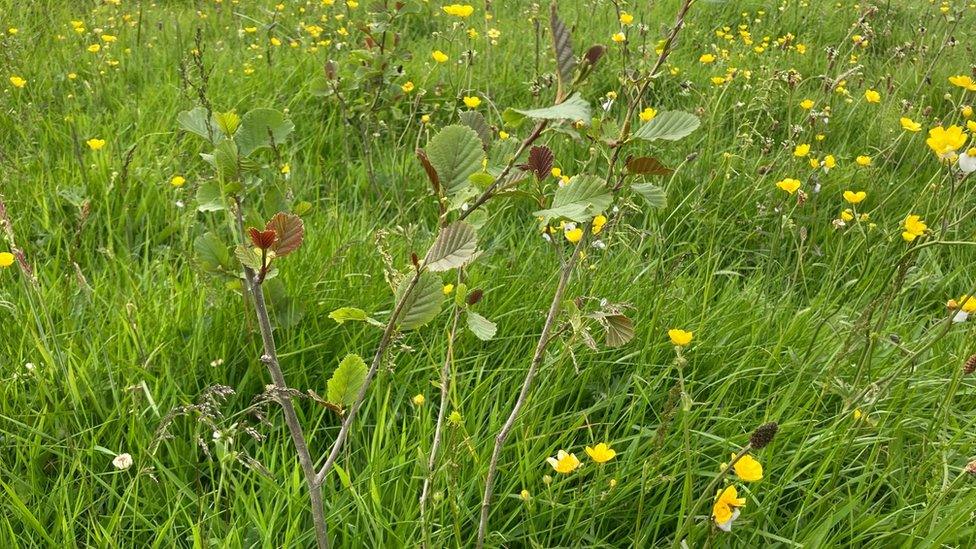Faughan Valley woodland trails open to public
- Published
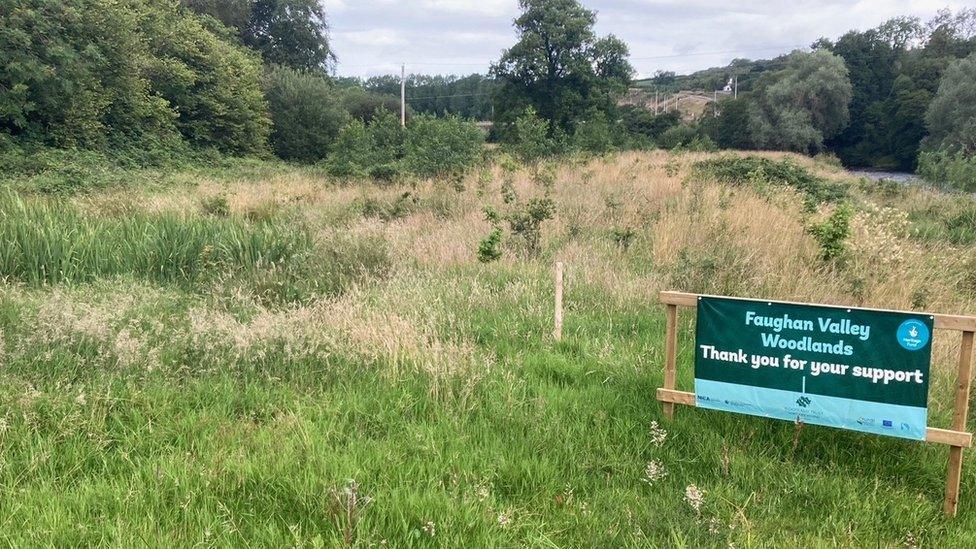
The Faughan Valley woodland trails are opening to the public
A significant proportion of Northern Ireland's ancient woodlands are scattered throughout Faughan Valley in County Londonderry.
For 20 years the Woodland Trust has worked to connect those fragments.
More than 70 hectares of connected woodland with 22 miles (35km) of walking trails is now open to the public for the first time.
Ancient woodlands, existing since 1600, make up just 0.04% of Northern Ireland's landscape.
Faughan Valley is a mix of ancient and newly-planted woodlands, something the Woodland Trust's estate manager Dave Scott said makes it particularly special.
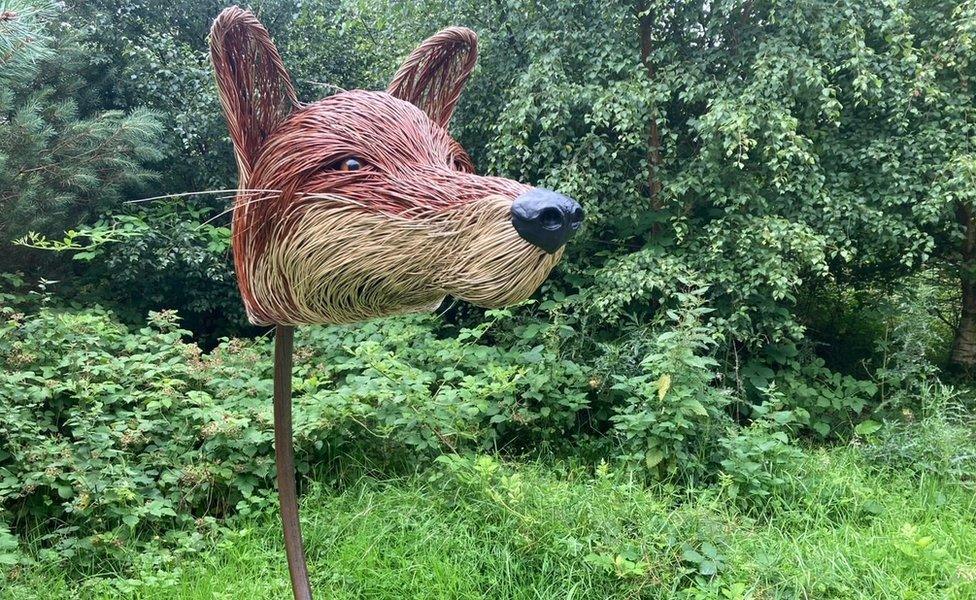
Wicker animal sculptures line new walking trails throughout the woodland
"We've over 300 hectares of classified ancient woodland here and that's because of the topography of the area," he explained.
"So the River Faughan, the likes of Glenrandal and the Burntollet rivers, is where you would find a lot of these pockets of enduring woodland concentrated.
"And that's because of the steep slopes and the rocky ground that's never been farmed or had any other land use."
The project has been funded by the National Lottery Heritage Fund and the Rural Development Programme.
It includes wicker animal head sculptures that visitors can stand inside and carved wooden benches for catching a breath along the way.
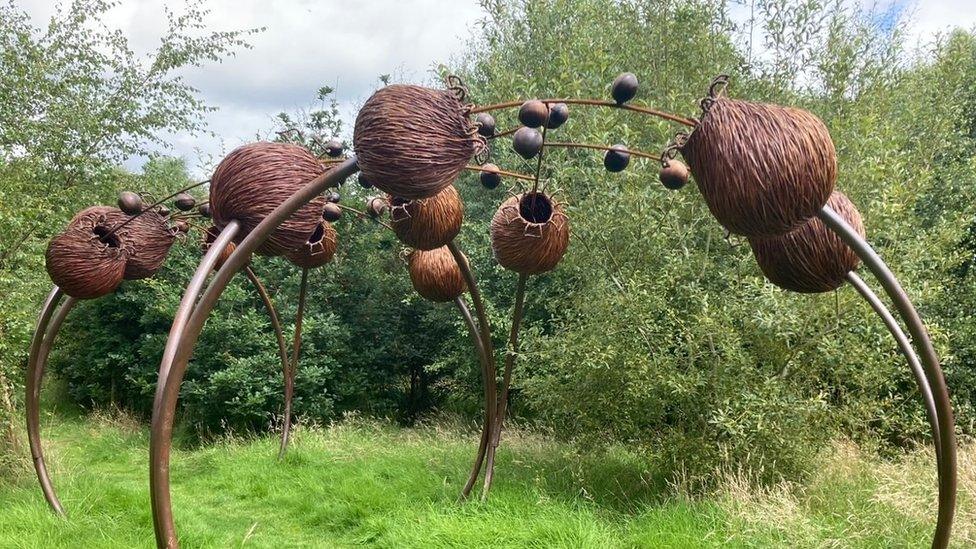
Grants have helped the Woodland Trust to complete the project
Ancient woodlands support diverse and unique wildlife, birds and plant life.
But they are much more scarce in Northern Ireland than elsewhere in the UK so protecting what remains is a priority.
That can involve stripping out other plants and trees, as has been done in Faughan Valley.
"We haven't done any of the path works until we had the conservation work well underway," said Mr Scott.
"Red Brae Wood had an infestation of rhododendron and also Japanese knotweed as well so they have been cleared and we've started the treatment process for those before we did any of the path work.
"So get the conservation of the woodlands right first, get them in favourable management, and then we can start thinking about doing access which is why these projects take quite a few years to get off the ground."
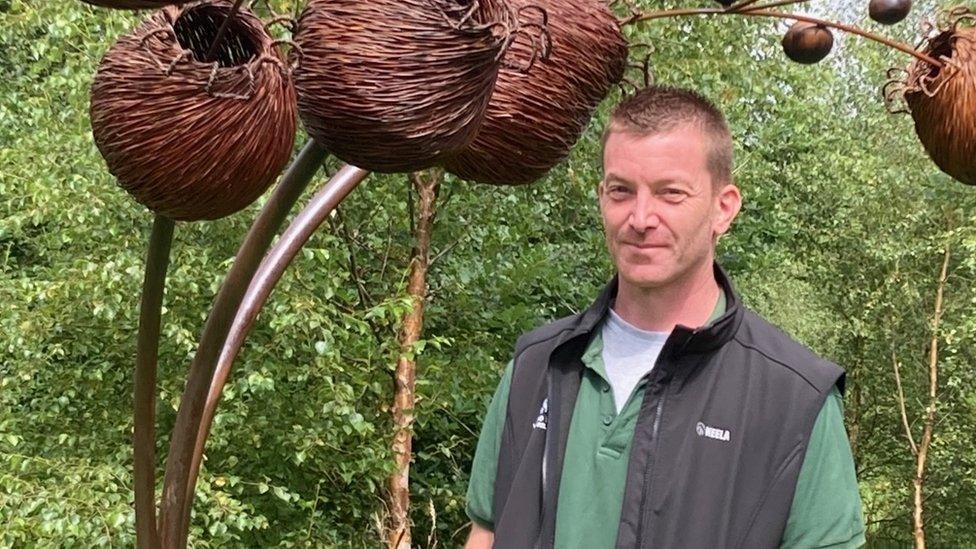
Woodland Trust estate manager Dave Scott says Faughan Valley is a particularly special area
There is an online map, external of ancient woodlands in Northern Ireland but, according to Dave Scott, they are easily spotted when you know what to look for, external.
"It is looking for those larger, maybe some more gnarly trees.
"The ground floor as well will be quite diverse - you see things like bluebells in the spring.
"But you're starting to get lots of lichens and mosses in these woodlands, a lot of rushes as well.
"So it's looking for that high diversity, the larger kind of more gnarly trees and more natural-looking - a lot of planted woodlands are planted in straight lines.
"So anything with a straight line probably isn't ancient."
Related topics
- Published1 August 2022
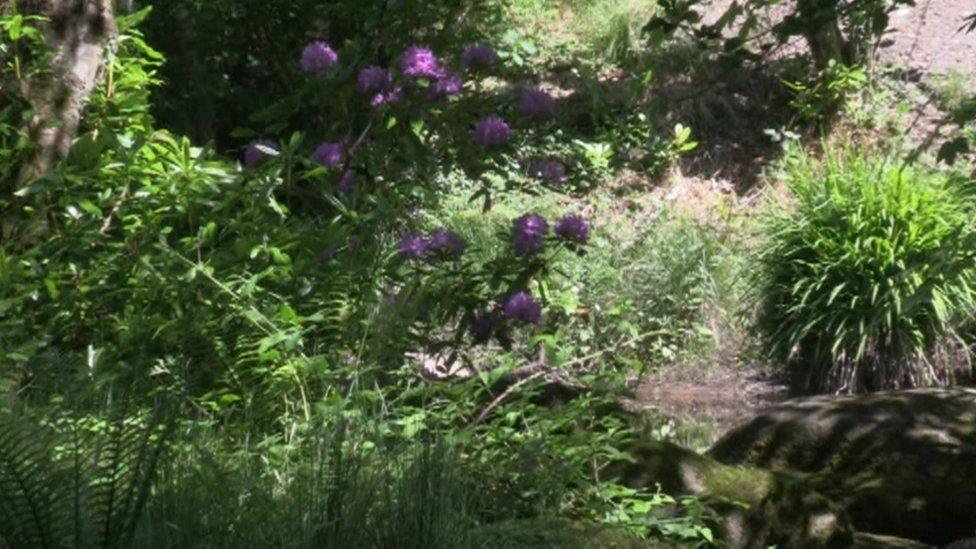
- Published15 June 2022
